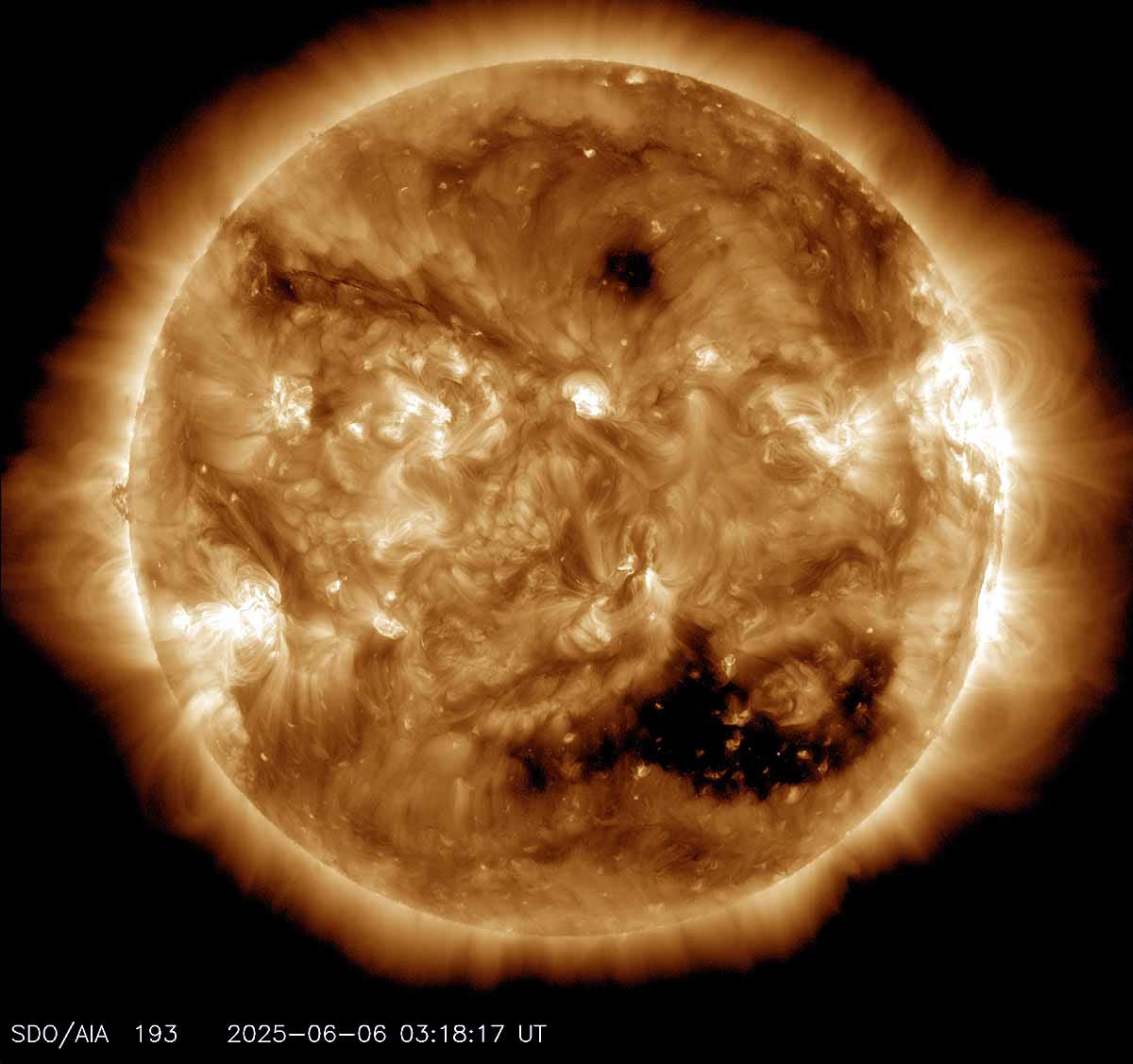On June 6, 2025, an extraordinary spectacle appeared on the Sun's surface. A giant orifice akin to a gaping ‘mouth’ stretched across, while two eye-like sunspots adorned the scene, portraying an expression of surprise. This is known as a coronal hole, allowing solar wind to escape into space.
What is the Sun's ‘Mouth’?
Captured by NASA’s Solar Dynamics Observatory (SDO) on June 4, 2025, the images showcased a massive ‘mouth’ in the Sun's southern region. Eye-like spots dotted the northern part, creating an impression of the Sun in awe or silently screaming.
See also:

Source: aajtak
Size: This ‘mouth’ spans across an expanse equivalent to five Jupiter planets.
Eyes: Each spot in the north mirrors Jupiter in scale.
Visibility: Invisible to the naked eye, appearing dark under ultraviolet light.
Understanding the Coronal Hole
While not an actual hole, this coronal feature marks regions where magnetic fields have opened, permitting solar gases and particles (solar winds) to escape into space effortlessly.
Temperature: Cooler and less dense than surrounding areas, these holes appear dark in ultraviolet rays.
Effect: Particles disseminate across the solar system, akin to swift winds.
Caution: Viewing the Sun requires special equipment like solar filters for safety.
See also:
Impact on Earth
This ominous ‘mouth’ and ‘eyes’ discharge solar winds toward Earth, yet there's no need for panic.
Geomagnetic Storm:
Upon collision with Earth's magnetic field, these particles can incite geomagnetic storms, spawning breathtaking auroras at the poles.
Mild Impact:
According to the UK Met Office, the storm is expected to be mild due to the hole's position in the southern hemisphere.

Source: aajtak
Comparison:
Unlike the hazardous coronal mass ejections (CMEs), which produce massive solar eruptions, this scenario poses lesser risk.
On June 3, 2025, NASA astronaut Don Pettit shared mesmerizing images of green and red auroras from a recent G4 geomagnetic storm, manifesting in rare locations.
Solar Activity: What's Happening?
The Sun is amidst an active phase of its 11-year solar cycle, which peaks in 2025. This dynamic period brings...
Solar Flares: Explosions frequently pepper the Sun’s surface.
Coronal Mass Ejections (CMEs): These significant eruptions could trigger potent storms on Earth.
Coronal Holes: Typical occurrences on the Sun’s surface.
Recently, a G4 storm painted global skies with vibrant auroras. Scientists project an uptick in solar activity, albeit expecting mild subsequent coronal holes.
See also:
Is It Dangerous?
No, the threats remain minimal. Winds from coronal holes may...
Satellites:
Light storms could disrupt satellites and communications but bear minor risks.
Power Grids:
Powerful storms could affect electricity grids, although such disruptions are unlikely this time.
Auroras:
Winds spawn stunning auroras near the poles.

Source: aajtak
Scientists vigilantly monitor every solar movement. NASA SDO and other spacecraft continually capture imagery.
The Sun’s 'Astonished' Countenance
Although this ‘mouth and eye’ formation is routine for scientists, it excites onlookers, reminding us of the Sun's enormous, enigmatic nature.
Size: The Sun, large enough to house 1.3 million Earths, commands attention.
Temperature: Surface heat reaches 5,500 degrees Celsius, while its core climbs to a staggering 15 million degrees.
Age: With an age of 4.6 billion years, the Sun will blaze for another five billion years.
Even scientists crack a smile at this bemused solar expression. Perhaps next time, the Sun won't seem as 'concerned'!




